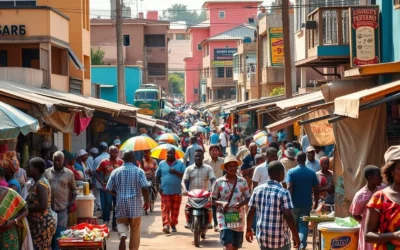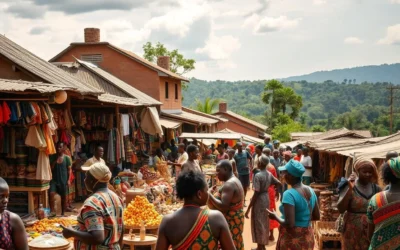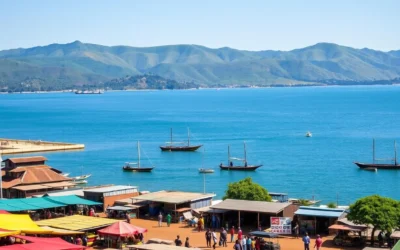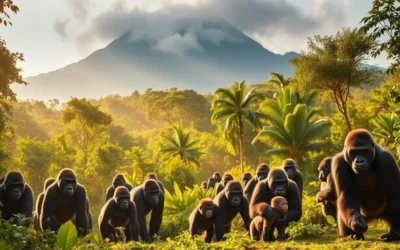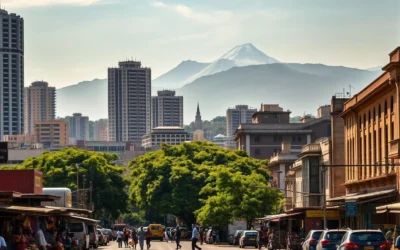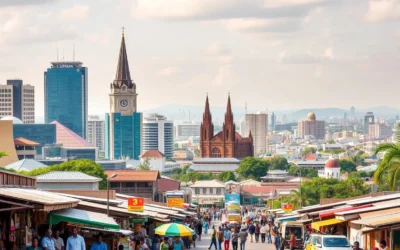Planning a trip to the Democratic Republic of the Congo can be challenging due to its vast size and varied climate. Located near the equator, the country’s weather conditions can significantly impact your travel experience.
The DRC’s climate ranges from hot and humid in the equatorial river basin to cooler and drier in the southern highlands and cooler and wetter in the eastern highlands. Understanding these variations is crucial for a successful trip.
To make the most of your trip, it’s essential to know the best time to visit different regions and plan accordingly. This guide will help you navigate the country’s climate and plan a weather-savvy trip to this incredible destination.
Understanding the DRC’s Tropical Climate
The DRC’s climate is generally tropical, yet its extensive territory encompasses various climate zones that impact travel planning. This vast country, being the second-largest in Africa, experiences a range of climatic conditions due to its geographical diversity.
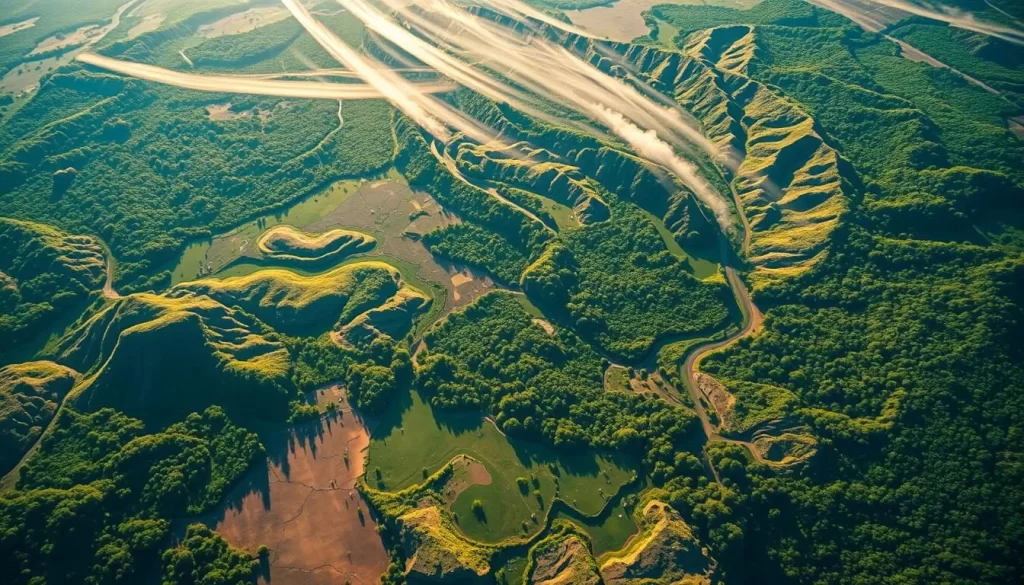
Geographical Location and Its Impact on Weather
The Democratic Republic of Congo’s geographical location significantly influences its climate. The country’s position near the equator means it receives substantial sunlight throughout the year, contributing to its tropical climate. The region’s varied topography, including highlands and lowlands, also affects local weather patterns. For instance, the coastal region in the southwest has milder temperatures due to the Atlantic Ocean, with less rainfall than inland areas.
Regional Climate Variations Across the Country
Despite the general characteristics of the tropical climate, the Republic of Congo exhibits regional differences that affect travel planning. The southern region, which houses the capital Brazzaville, shows similar climatic characteristics to the coastal region. The central high plateau has more pleasant temperatures due to the altitude, but experiences higher amounts of rainfall. The rainforest areas inland are characterized by extremely high rainfall and constant temperatures. Understanding these variations is crucial for planning a trip to the DRC, as the rainy seasons and dry seasons differ significantly across the country. The season lasts from April to October north of the equator, while south of the equator, these seasons follow a different pattern.
By recognizing these regional climate variations, you can better plan your trip to the Democratic Republic of Congo, choosing the best time and month to visit specific areas based on your preferences and activities.
Dry and Rainy Seasons in the Democratic Republic of Congo
To make the most of your visit to the DRC, it’s essential to know about the dry and rainy seasons. The country’s tropical climate is characterized by these two main seasons, each with its unique conditions and impact on travel and activities.
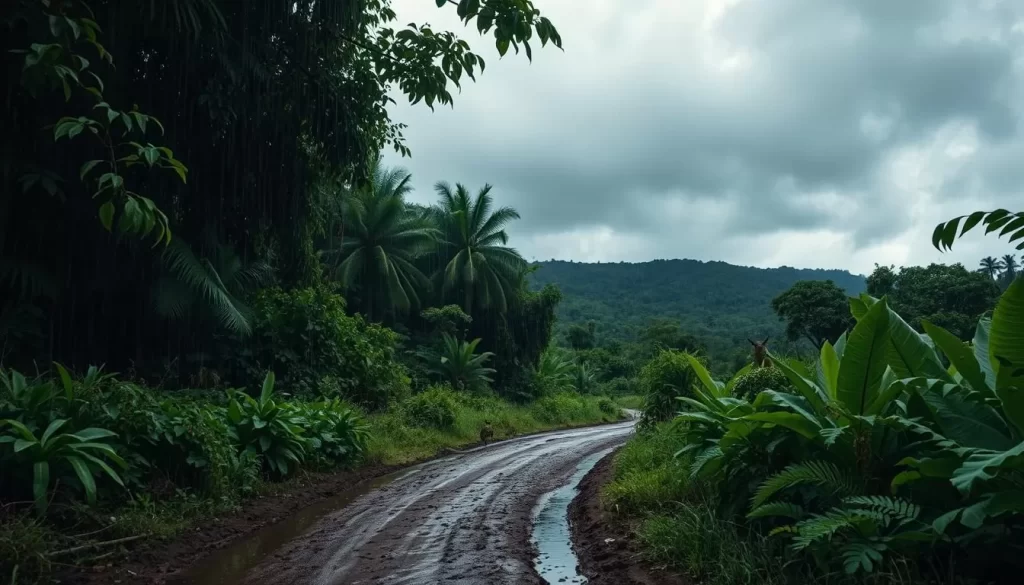
The Main Dry Season: June to September
The main dry season, spanning from June to September, is considered the best time to visit the DRC. During these months, the weather is generally dry and sunny, making it ideal for outdoor activities like gorilla trekking and visiting national parks. The dry conditions also make it easier to travel to remote areas, as the roads are more accessible.
The Short Dry Season: December to February
December to February marks the short dry season in the DRC. Although it’s a dry period, it’s also a popular time for tourists, especially during the Christmas and New Year holidays. The weather is generally pleasant, but it’s worth noting that some areas can still experience occasional rain showers.
Rainy Seasons: March-May and October-November
The rainy season in the DRC is divided into two periods: the long rainy season from March to May and the shorter one from October to November. During these months, the amounts of rainfall are particularly high, especially in March/April and November. Daytime maximum temperatures reach 31-33°C, and humidity rises significantly, making many roads and paths impassable. Despite the challenges, the rainy season also has its charm: Nature appears in lush green, and boat trips on rivers like the Congo are still possible, making it a good time for certain activities. The period from October to May encompasses both the long rainy season and the short dry season, highlighting the variability of the DRC’s climate.
Best Months for a Weather-Savvy Trip to the Democratic Republic of Congo
Planning a trip to the Democratic Republic of Congo requires understanding the country’s tropical climate to make the most of your visit. The country’s diverse geography and climate mean that the weather varies significantly across different regions and times of the year.
June to August: Prime Time for Visitors
The months of June to August are considered prime time for visiting the Democratic Republic of Congo. During this period, the country experiences its main dry season, characterized by relatively cool and dry weather. This makes it an ideal time for outdoor activities such as gorilla trekking, wildlife viewing, and hiking. The dry conditions also make it easier to navigate the country’s terrain, improving the overall travel experience.
Key benefits of visiting during June to August include:
- Favorable weather conditions for outdoor activities
- Easier navigation of the terrain due to dry conditions
- Optimal conditions for gorilla trekking and wildlife viewing

December to February: The Alternative Window
For those who cannot visit during the June to August window, December to February offers an alternative dry season, albeit shorter. This period is characterized by dry and relatively hot weather, making it suitable for various tourist activities. While some regions may still experience occasional rain showers, the overall conditions are generally favorable for travel and exploration.
Months to Avoid and Why
Certain months are best avoided when planning a trip to the Democratic Republic of Congo due to unfavorable weather conditions. March and April are part of the short rainy season, with daily rainfall and high temperatures creating uncomfortable travel conditions. Similarly, October and November mark the beginning of the long rainy season, with heavy downpours that can lead to flooding and limited accessibility. Visiting during these periods can significantly impact your travel plans and overall experience.
Challenges during the rainy season include:
- Muddy and impassable dirt roads making transportation difficult
- Reduced visibility and challenging conditions for wildlife viewing and photography
- Increased difficulty in accessing certain areas due to flooding
By understanding the seasonal variations and planning accordingly, you can have a more enjoyable and fulfilling trip to the Democratic Republic of Congo.
Planning Your Activities Based on Weather Patterns
Your DRC adventure can be greatly enhanced by timing your activities with the optimal weather conditions. Understanding how weather patterns influence wildlife behavior and visibility is crucial for making the most of your trip.
Gorilla Trekking: Optimal Weather Conditions
Gorilla trekking is a highlight of any visit to the DRC, and the dry season offers the best conditions for this activity. Drier trails make it easier to navigate through the forests, increasing your chances of a successful trek. Kahuzi-Biega National Park is a prime location for gorilla trekking, with its eastern lowland gorillas.
National Park Visits: Virunga and Odzala-Kokoua
Visiting national parks like Virunga and Odzala-Kokoua can be a thrilling experience, with the dry season being particularly good for wildlife viewing. During this time, animals gather around waterholes, making them easier to spot. July and August are excellent months for birdwatching as well, with many migratory birds passing through.
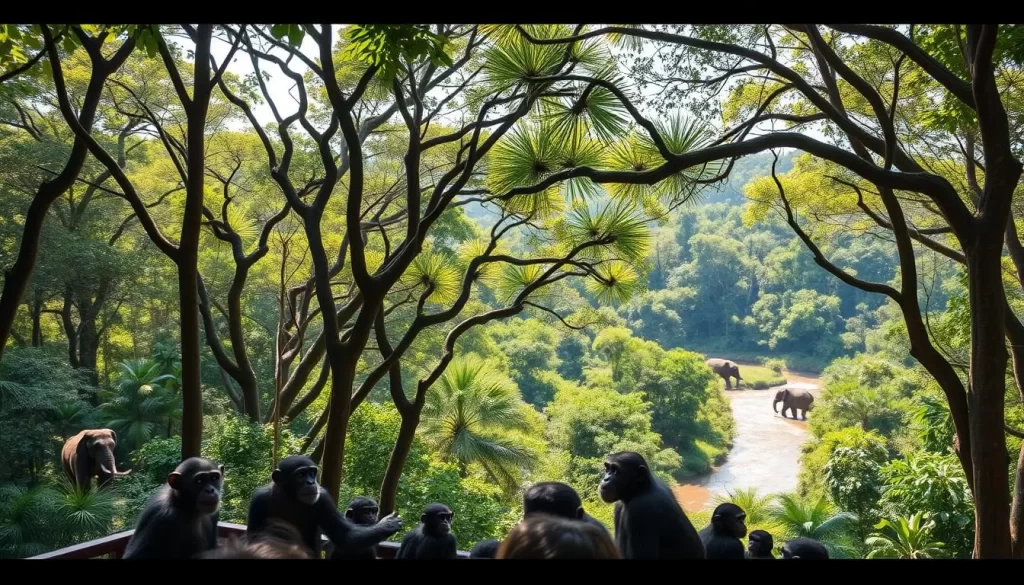
Wildlife Viewing and Hiking Opportunities
The DRC offers numerous opportunities for wildlife viewing and hiking, with the dry season providing optimal conditions. Safaris in the rainforest allow you to observe forest elephants, chimpanzees, and various antelope species. Hikes through the savanna landscapes are also more rewarding during the dry months.
- The dry season creates optimal conditions for wildlife viewing as animals concentrate around limited water sources.
- Hiking opportunities are affected by seasonal weather, with dry periods offering more comfortable trekking conditions.
- Birdwatching experiences peak during July and August, with opportunities to spot both resident and migratory birds.
Conclusion: Making the Most of Your Congo Adventure
To make the most of your Congo adventure, it’s essential to consider the country’s tropical climate and seasonal variations. The best time to visit is during the dry season, from June to September, when weather conditions are more favorable for outdoor activities like hiking and wildlife viewing.
By understanding the seasonal patterns and planning your trip accordingly, you can experience the diversity of the Democratic Republic of Congo in all its facets. Whether you’re interested in gorilla trekking, cultural experiences, or simply exploring the country’s natural beauty, timing your travel right is crucial.
With this knowledge, you’ll be well-equipped to plan a successful trip to the Congo, making the most of your time in this remarkable destination.
The above is subject to change.
Check back often to TRAVEL.COM for the latest travel tips and deals.
Here are some Tours & Sightseeing suggestions that might pique your interests!

